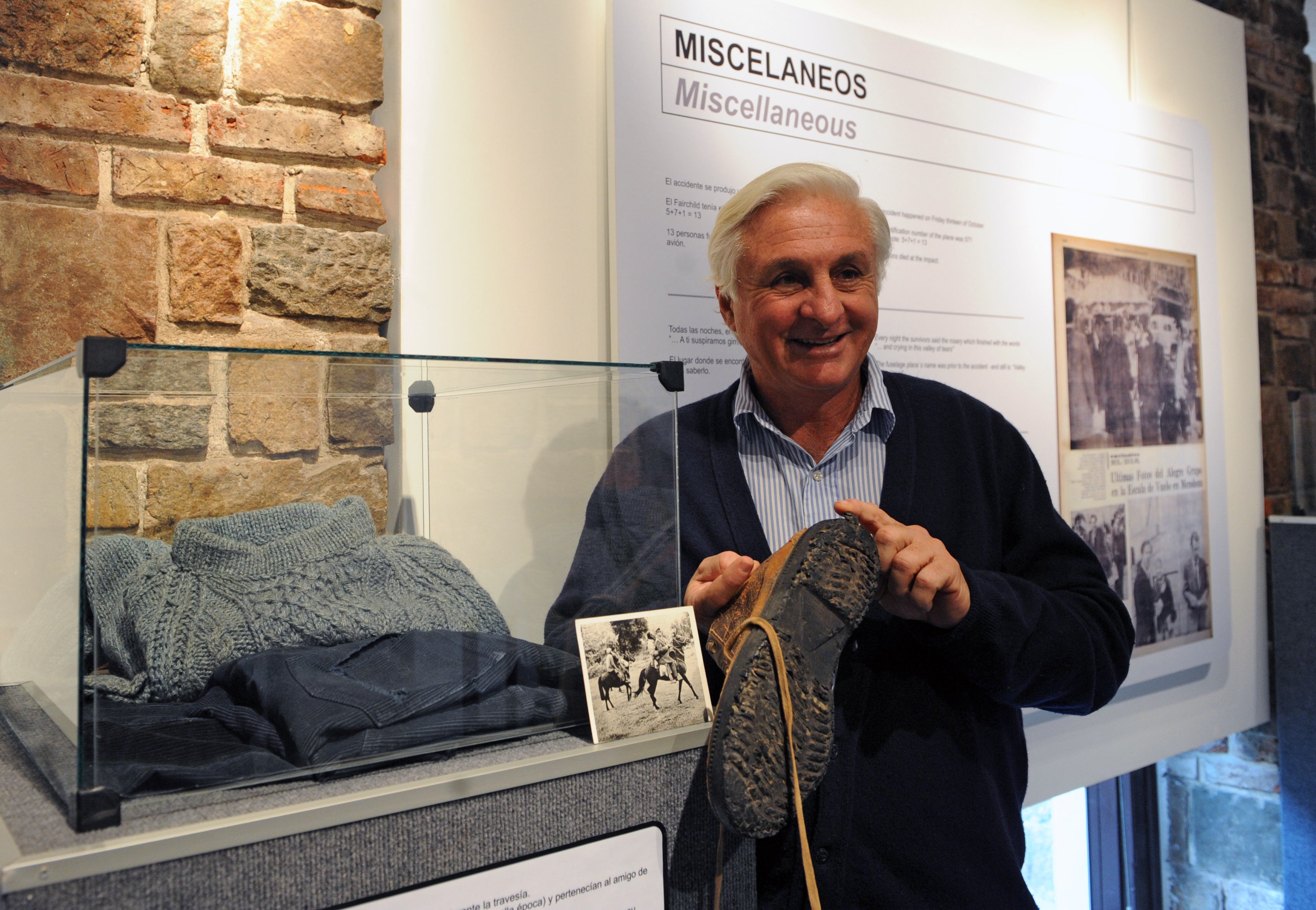
Survivors of the 1972 Andes flight disaster have “no regrets” over resorting to cannibalism to fend off death long enough to be rescued.
Uruguayan Air Force flight 57 – a chartered trip from Montevideo, Uruguay, to Santiago in Chile carrying an amateur rugby team – ploughed into the Andes mountains not far from the Chilean border on 13 October that year.
At the aircraft’s helm was an inexperienced co-pilot who had wrongly believed the flight had reached Curicó, Chile, and began the its premature descent into Pudahuel Airport.
At this point, the plane was actually some 40 miles away from the point at which it was to begin preparing for landing.
Caught unawares mid-descent, the plane collided with the side of a mountain – severing the tail section and both wings. The central part of the aircraft went careering down a glacier for 725 metres, before crashing into snow and ice.
Twelve of 45 crew members and passengers died instantly. A further 17 people lost their lives as a result of the bitter temperatures and severe injuries later on.
Those who survived – a group gradually whittled down to just 16 people – faced a gruelling 72-day wait before their eventual rescue on 23 December.
Fifty years on, the Andes flight disaster remains the source of great intrigue – a fascination derived from the survivors’ turn to cannibalism in order to stay alive.
“Of course, the idea of eating human flesh was terrible, repugnant,” Ramon Sabella, 70, a businessman, told The Times. “It was hard to put in your mouth. But we got used to it.”

Having exhausted their paltry stocks of chocolate, sweets, jam and wine – even the cotton used to pad the plane seats – Roberto Canessa, a medical student, touted the idea of eating the dead bodies strewn around the stranded fuselage.
Using a piece of glass, he was the first to carve up the bodies of his friends.
“I had to go to their families later to explain,” he said, but added he would have considered it an “honour” should he have died and “they had used me to live”.
To make peace with their actions, the survivors made a pact “that if one of us died, the others were obliged to eat their bodies”, Mr Canessa explained.
According to Carlitos Paez, another survivor, eating human flesh was not that difficult. For the curious, a human “doesn’t taste of anything, really”, he told the newspaper.
The survivors started by eating strips of skin and fat, before resorting to muscle and brain.
“They lost their inhibitions. They started eating out of skulls, making a cuisine out of flesh,” Piers Paul Read, the British author of Alive: The Story of the Andes Survivors, said.

Though rescue teams flew over the site of the crash several times in the days after the incident, they were unable to spot the white fuselage against the snow. After eight days, authorities cancelled the rescue effort.
Immense desperation led Mr Canessa and another member of the group, Fernando Parrado, on a journey in search of help. The pair survived the 5,000m ascent up a mountain with just a homemade sleeping bag and socks stuffed with reserves of human flesh.
After hiking for 10 days, Canessa and Parrado spotted three men on horseback at the other side of the river where they were setting up camp. Mr Parrado threw a rock across the river wrapped in paper which bore a note, which read: “I come from a plane that fell in the mountains.”
The message explained that Mr Canessa was no longer able to walk and the survivors would die unless they were rescued from the fuselage. One of the men rode on horseback for 10 hours to raise the alarm.
On 22 December 1972, two helicopters carrying search and rescue teams reached the group. The remaining survivors were lifted to safety the following day.







